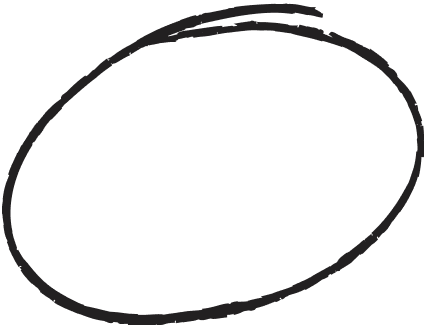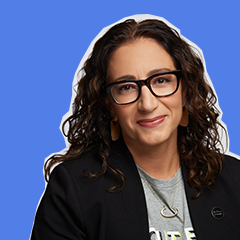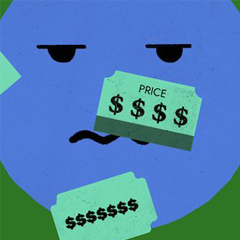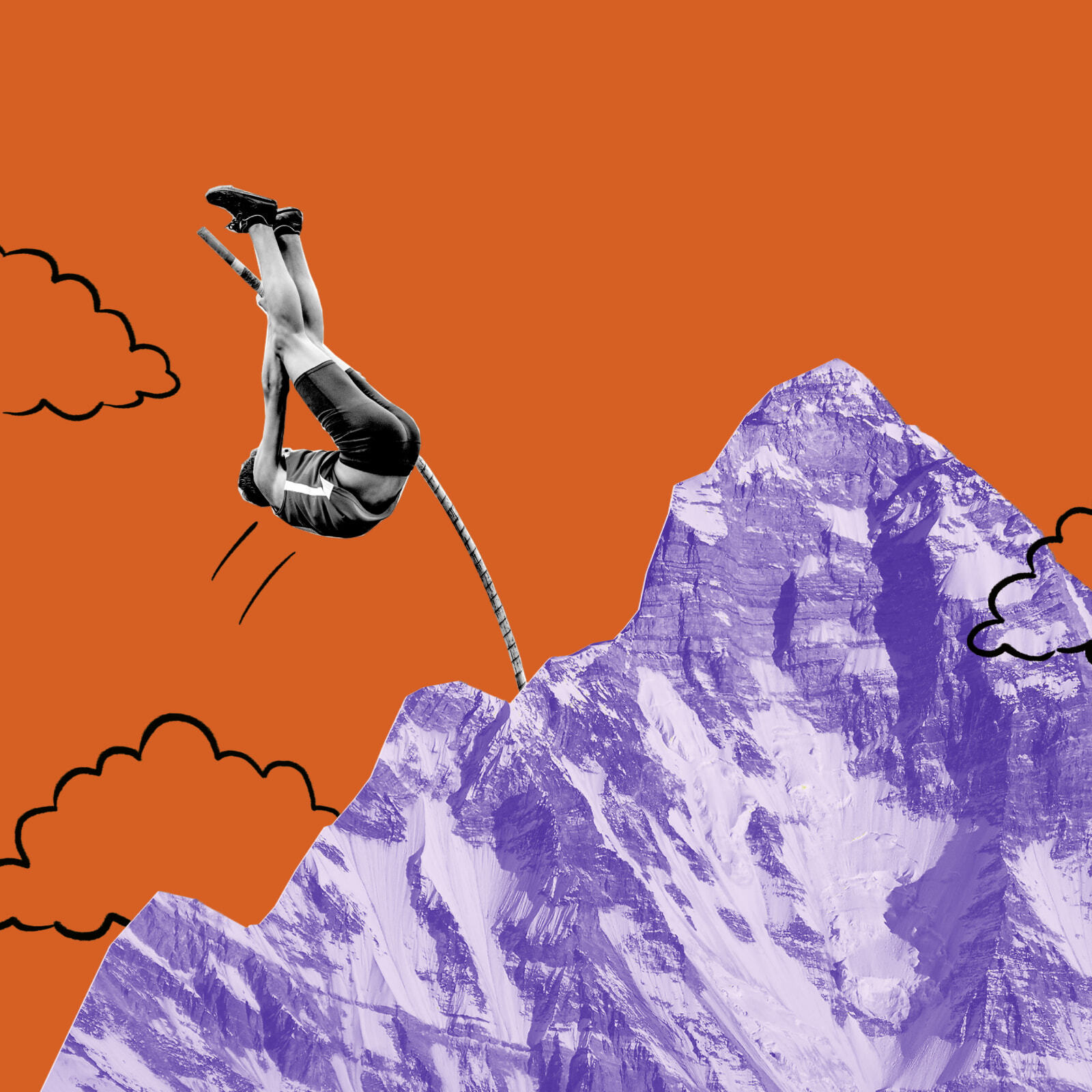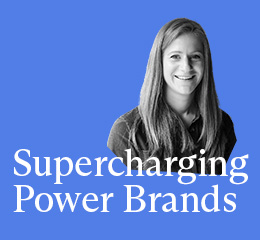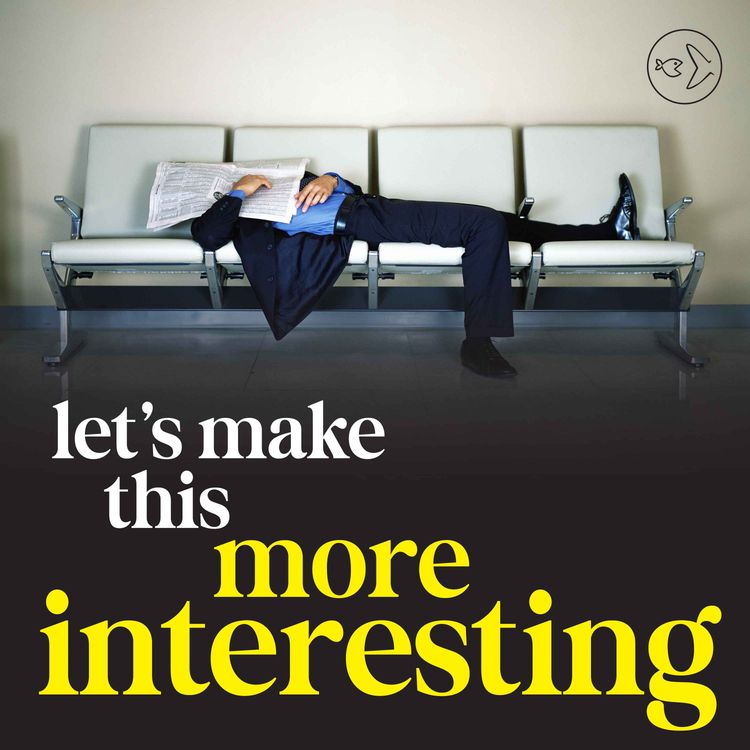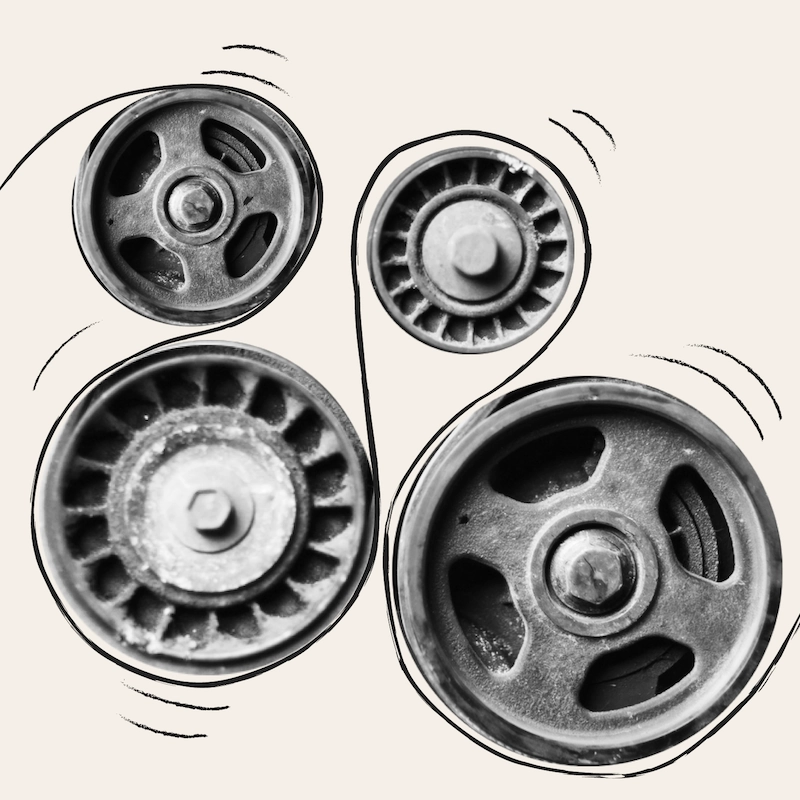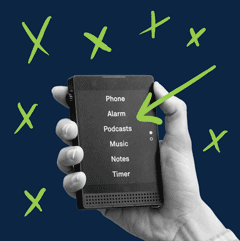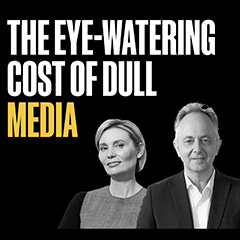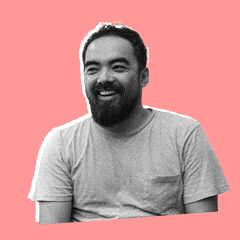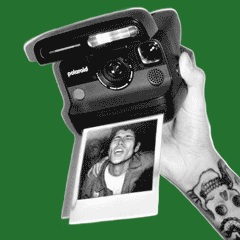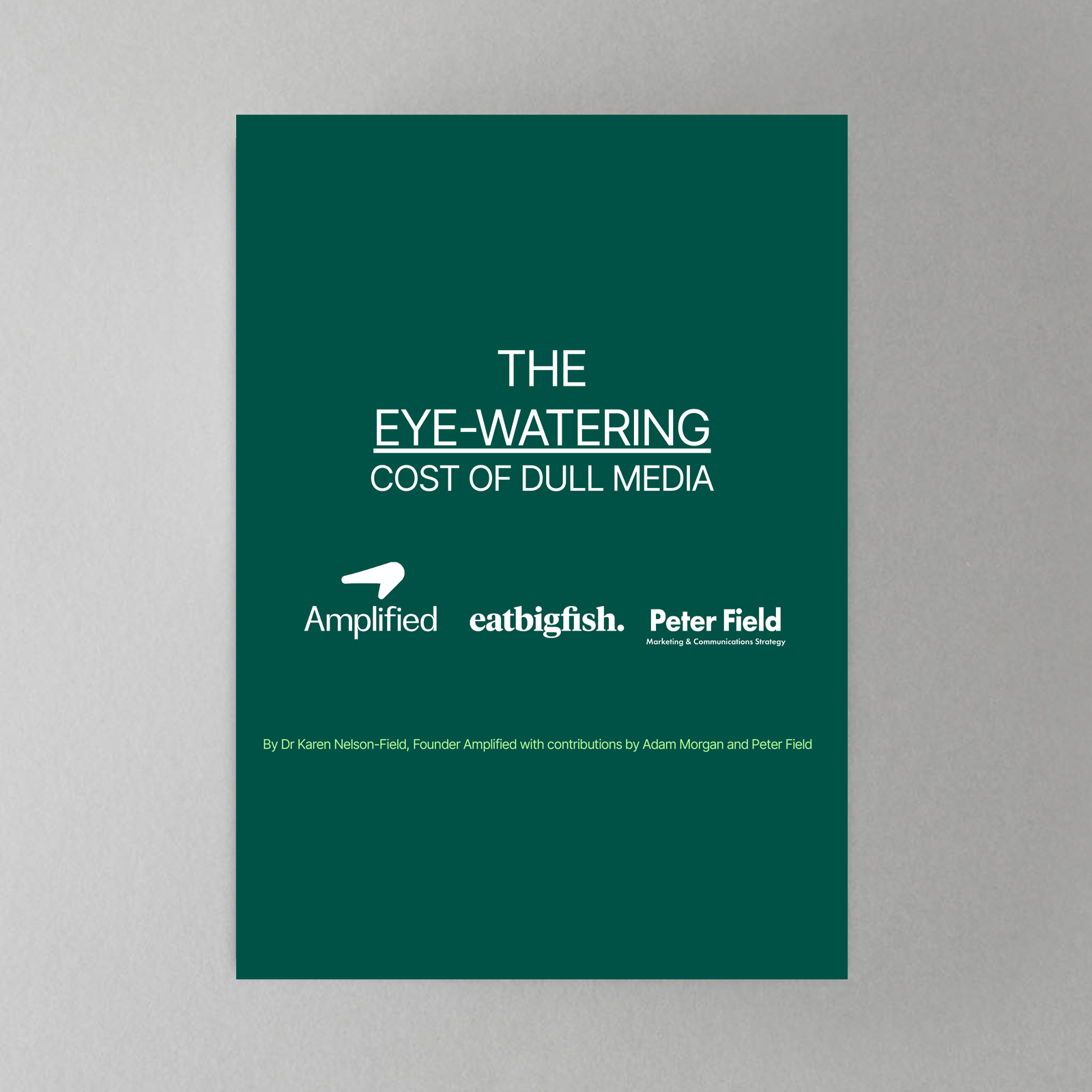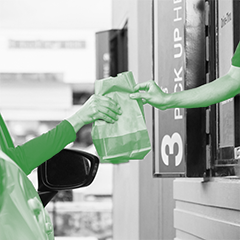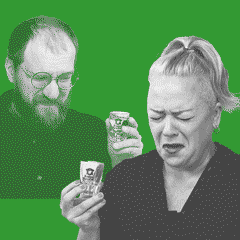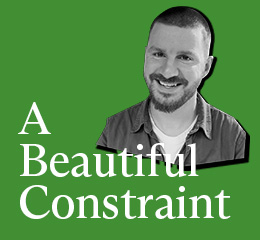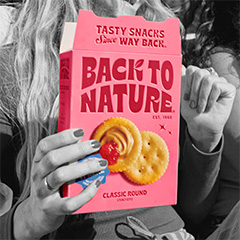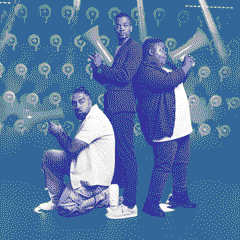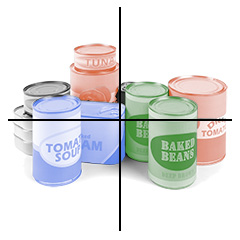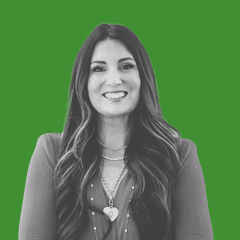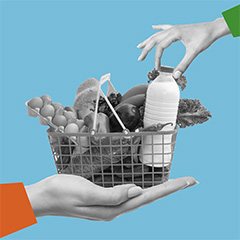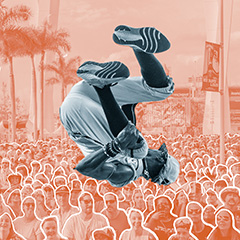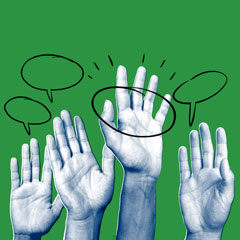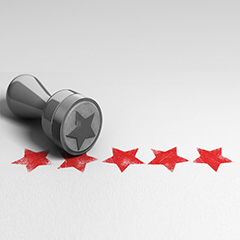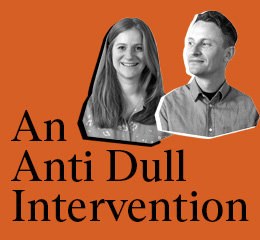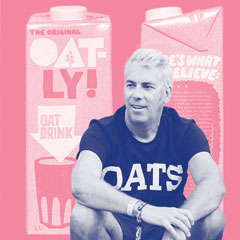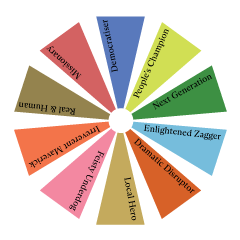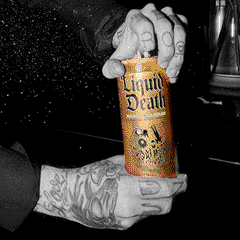Nando's: "Our ambition is to be the most loved brand."
Nando's: "Our ambition is to be the most loved brand."
A Challenger brand from the beginning, global restaurant brand Nando’s has always had ambitions that outweighed its resources. From its founding in Johannesburg in 1987 to the now over 1,000 shops worldwide, they’ve continually demonstrated their ability to tell stories with passion and enthusiasm. Ellie Simmons spoke to Marketing Director Jessica Wheeler to understand how Nando’s uses their Challenger Mindset to speak on behalf of their audience when it matters most.
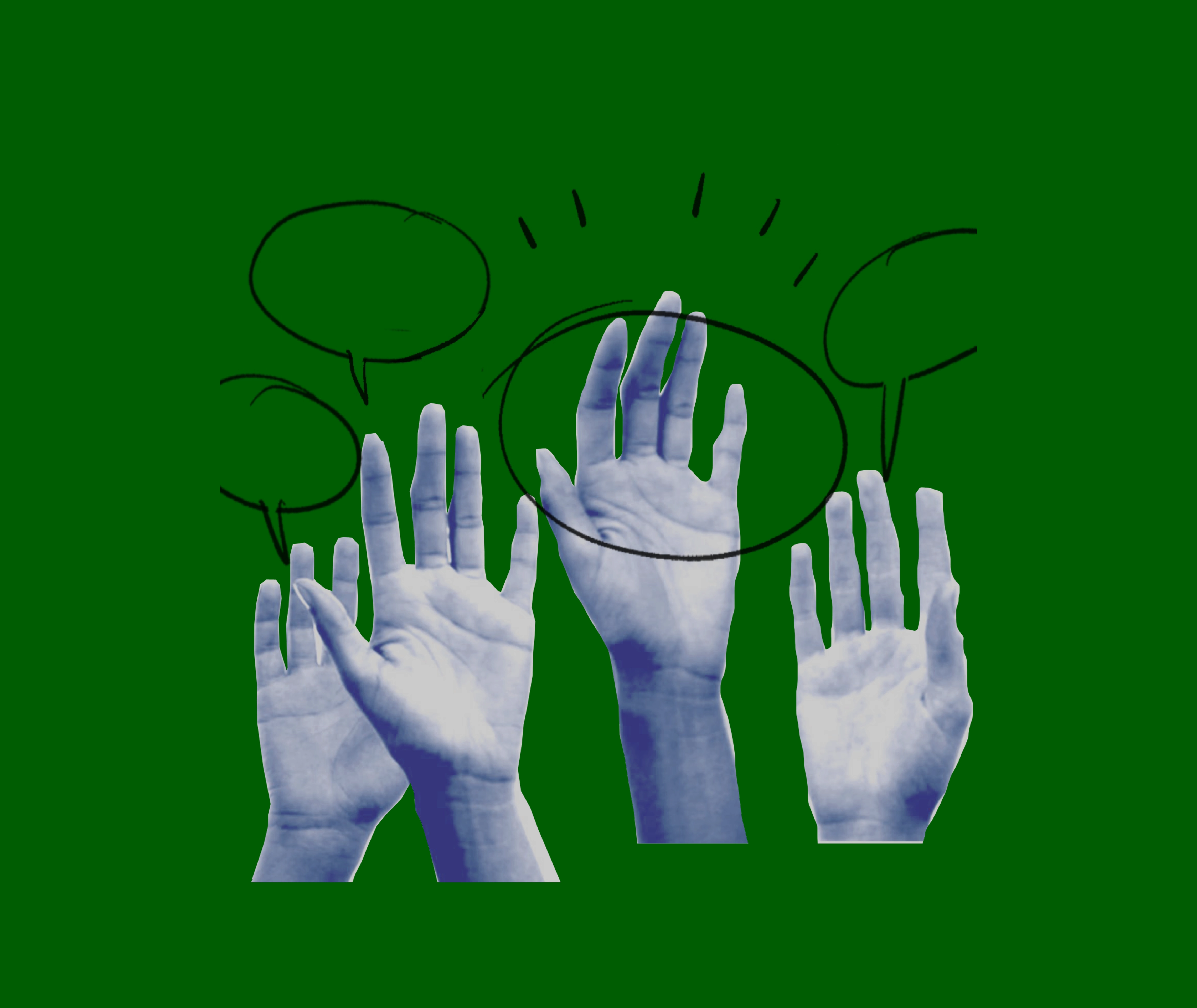
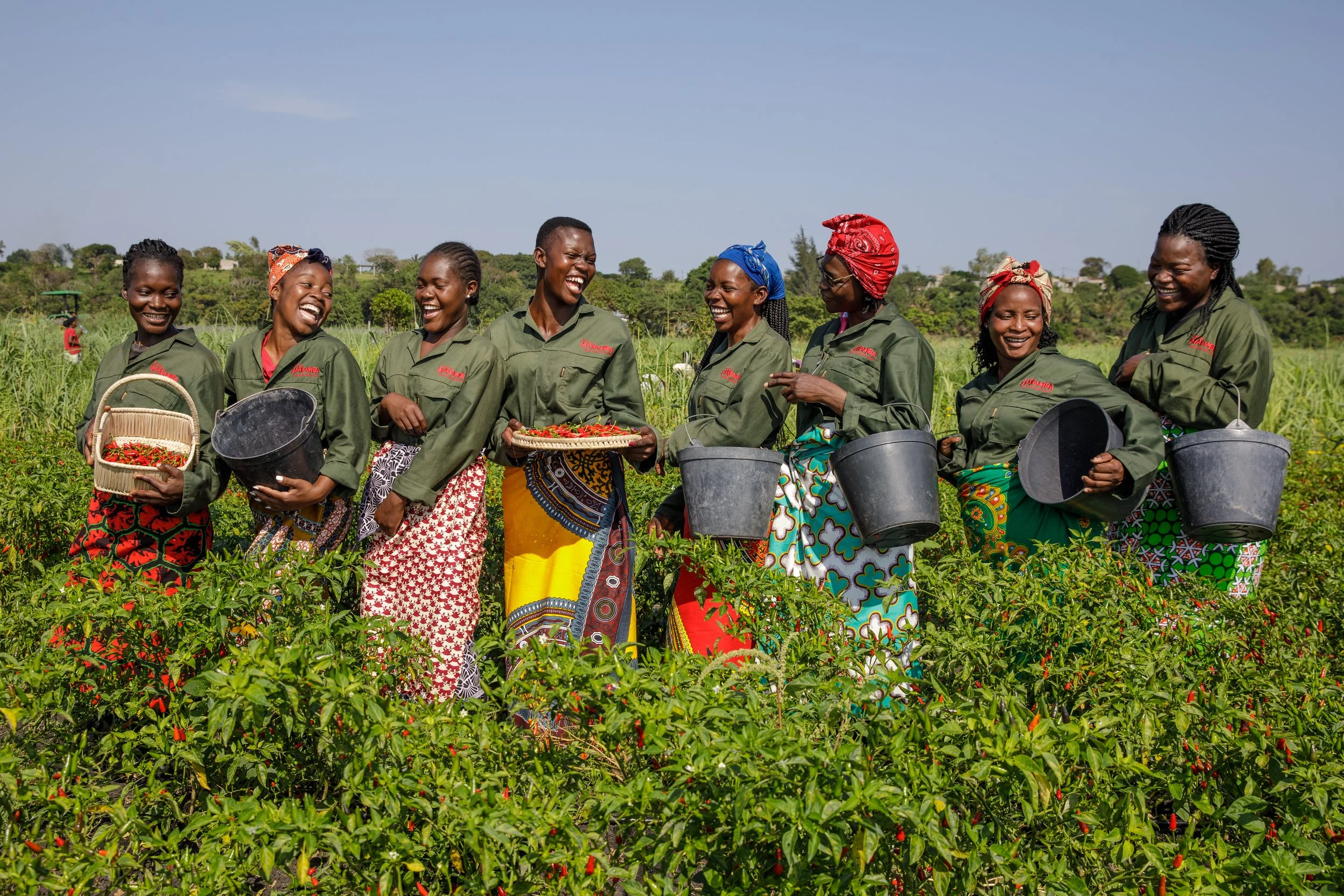

Nando’s has been around for several decades now. Can you tell us how the story of the brand has unfolded over the years?

Nando’s will be 38 in September and the company started much like any Challenger brand would, with two guys having lunch at this peri-peri chicken place and thinking, this is amazing, and the world needs to know about it. These were two guys who had no business being in the restaurant industry at all – neither of them had any experience in it. They just fell in love with the product, and they knew that this was something that firstly, South Africa, and now, eventually the world, deserved to have a taste of. So, the brand was born out of that Challenger Mindset.
So, they bought that chicken shop, and really, right from the onset, they had no choice but to do marketing in a different way. They had no money. They had no experience. Their first ad agency was paid in shares in the brand. Everything was patched together out of enthusiasm, and this will to share this amazing product with the world, and it's still very much the philosophy of where we're at today.
At the end of the day, we've got to return to the quality of the product and the way that customers experience that product, because it's very easy to get lost in all the opportunities, the advertising and the comms that sits out there. You've got to put the product at the centre. And that's the one thing about Nando's that is as true today as it was nearly 38 years ago when we opened the first store.
That enthusiasm is reflected in the way we communicate. It's reflected in our marketing strategies. We've got be bullish. We've got be positive. We've got be optimistic, often, in spite of the world crumbling around us at the best of times. So, we have a philosophy of acting like shop owners – imagine this was your one peri-peri chicken shop, and you were in charge of it. You have to make those decisions for this one store, instead of thinking about the 300+ we have in South Africa and the more than 1,000 we have around the world. You've got to think of it as that one little chicken shop. What decisions would you make, and how would you go to market if you were just doing it for this one little thing with no money?

We often say that one of the things that defines Challengers is that they are fighting against a monster – in society, culture, the category, etc. Thinking about your brand purpose, what is Nando’s fighting against?
I think that changes over time, right? The one thing that we often don't speak about is our Challenger Mindset. You don't have it and then just have it forever. You've got to consistently work at it. So, as we go along with time, that big monster in the room changes. It may have at some point been a big category player or a big competitor, but right now it's more of a societal impact. The role that Nando's as a brand, plays in South African society is very different now, because we're bigger, and we're a little bit more grown up. We've got more scale, so we have the opportunity to actually have real impact and influence the sentiment of the country on social media channels, in particular. So, that monster changes over time, because if you keep fighting the same monster, you feel it in the work, and you feel it in the teams, and you feel it in the way you go to market. It gets formulaic, and other people catch up. Other people start doing it, and you lose that Challenger positioning pretty quickly. You've got to keep looking out for the next monster. So, for us moving forward, that monster has a lot more to do with society and the impact that we can have, rather than pushing directly against a category competitor.
How do you dramatise that fight when it comes to your communications strategy?
We're pretty good at picking up the underlying message. So, it's really easy, particularly in this day and age, on social media to have a handful of listening tools which will just spit out the things that are trending or the things that people are talking about. But often, that's not what people want to hear. If you just latch on to the next trending topic or the football results, or the political climate, you'll get a pretty surface level thing, but we really try and uncover what it is that people want to be said on their behalf. There may be a topic of conversation about politics, and there's a lot of chatter about it online, but perhaps what people want said on their behalf is something slightly different. Hypothetically speaking, people may actually want to have a conversation about South Africa being strong enough and bold enough to stand on its own two feet. So, perhaps we don't need to engage with international politics and those kinds of things. It's always about finding that little layer underneath that is what people want to be said on their behalf. Because if you just reflect back what they're saying, it doesn't really get very far.
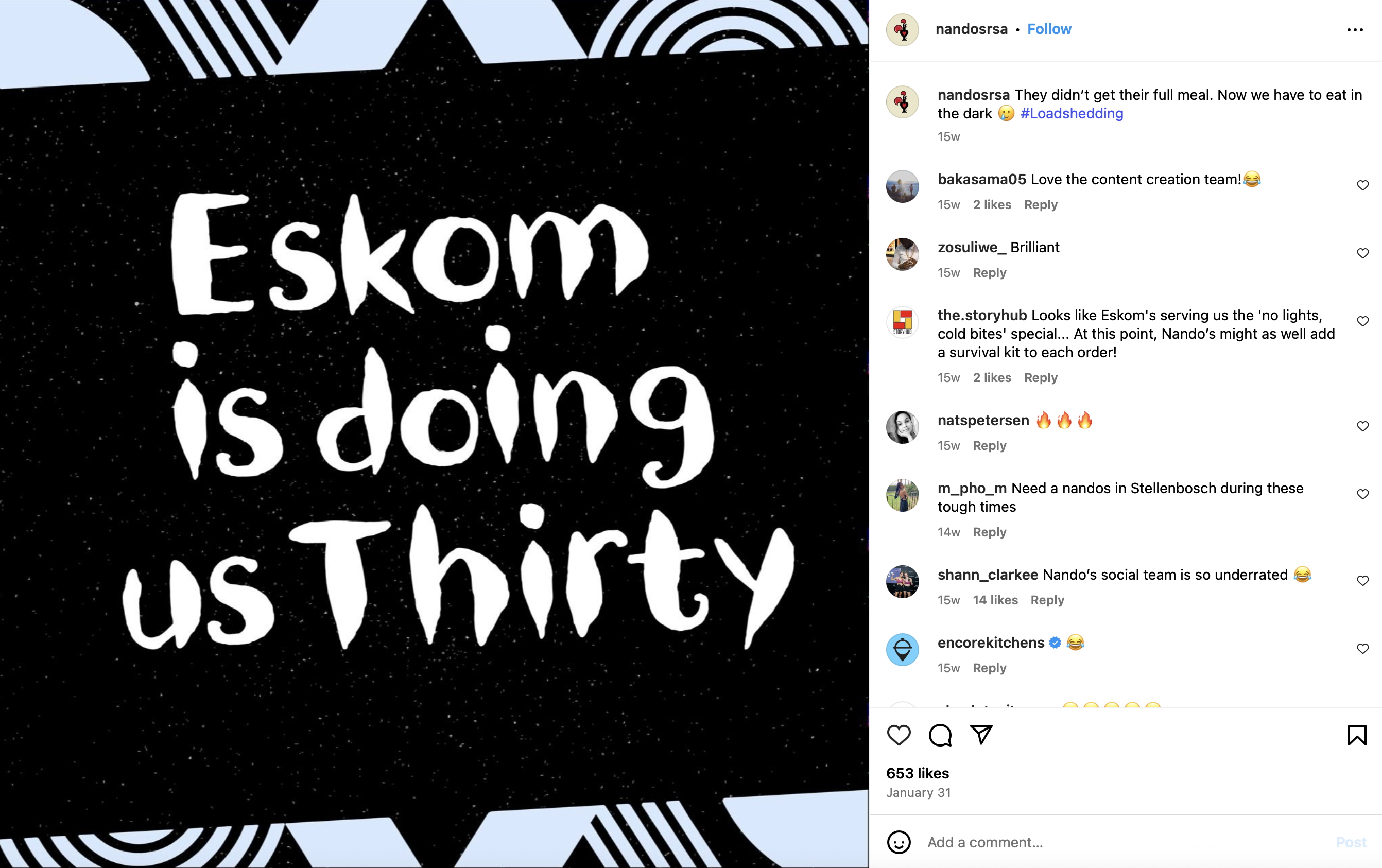
Our approach, particularly with social commentary, came from the fact that we were this Challenger brand. We were looking for ways to be involved in the conversation that didn't require oodles and oodles of media money, which we never had back in the day, and, quite frankly, we still don't have today. So, you've got to find interesting and smart ways to be a part of that conversation. We still say, we want to be part of the conversation. We don't want to lead a conversation; we don't want to start a conversation. We just want to give an interesting point of view or say what our audience wants to be said. It is very difficult and time consuming and particularly with the proliferation of social media, there are 40,000 opportunities a day to do something, and it can become quite overwhelming. So, we have a shortcut now to pick out the things that we'd like to engage with. We are now a global brand. We have a responsibility to be very conscious of the fact that we operate in other markets and that there are sensitivities there, culturally as well as societal, which we may not have an idea on. So, we've had to give ourselves guardrails, especially as the tone of some of the social media channels can be quite negative and bullying. So, we try to stay away from those ones, in particular. Our approach has shifted over time, but I think the ambition is still strong to be a part of the conversation and be the voice of the people – to say the things that people want to be said on their behalf when it matters.
Many of your comms are quite punchy. How do you overcome barriers within your organisation when it comes to more potentially risky communications ideas? And how do you motivate your team to take these risks?
It’s difficult. The more grown up and the bigger you get, the more the system is almost hedged against that. So, particularly from a marketing point of view, we can be super bullish about something, and we almost have to be. We have to be overly bullish, because we know that the process to get there, it's going to pull it back, right? You'll have finance people in the way and ops people and franchisees, and all sorts of people that may chip away at that idea. So, you actually have to overshoot it, knowing that there's a little bit of flex for it to be pulled back and to be something that realistically we can execute at scale. We do have a need to execute everything at scale, because we have 300+ restaurants on the ground, that this needs to show up in. So, we've always got to overshoot, knowing it's going to be pulled back. If you start with average and it gets nibbled away, then you have nothing. You almost have to go for the absolute shock factor, knowing that you're probably going to land on something special by the time everyone's had a bite at it.
How would you articulate the Nando’s brand ambition and what sets you apart from other businesses in your category?
Our ambition is to be the most loved brand, not the biggest, not the most profitable, just the most loved. We are led by visionaries; and we have very ambitious leadership who want to build a legacy brand, not a short-term results brand. This automatically puts us at an advantage, because we can afford to make the decisions that invest in customer experience that has a legacy impact. That investment has deep implications for the business and long term returns, as opposed to us worrying about the things that we do today that have to have a return tomorrow. That’s not to say we haven't been there. We've played, and we've burnt our fingers. We've learnt a bunch of things, but particularly in our category, when you're worried about the short-term results, you start putting the customer experience to the side, and you start looking at cost cutting, cost efficiencies, speed. Just turning tables as fast as you can, so that you can kind keep this monster going. But when you have a long-term outlook or a legacy ambition, it completely changes the game. We have the licence to invest in things today, knowing that potentially, the return is going to be three years or five years away, and that return may be made up of loads of different things altogether, rather than one big thing like discounting our food. It makes it easier to be able to do those things, because of the way we're structured and the general culture and attitude of the leadership team.
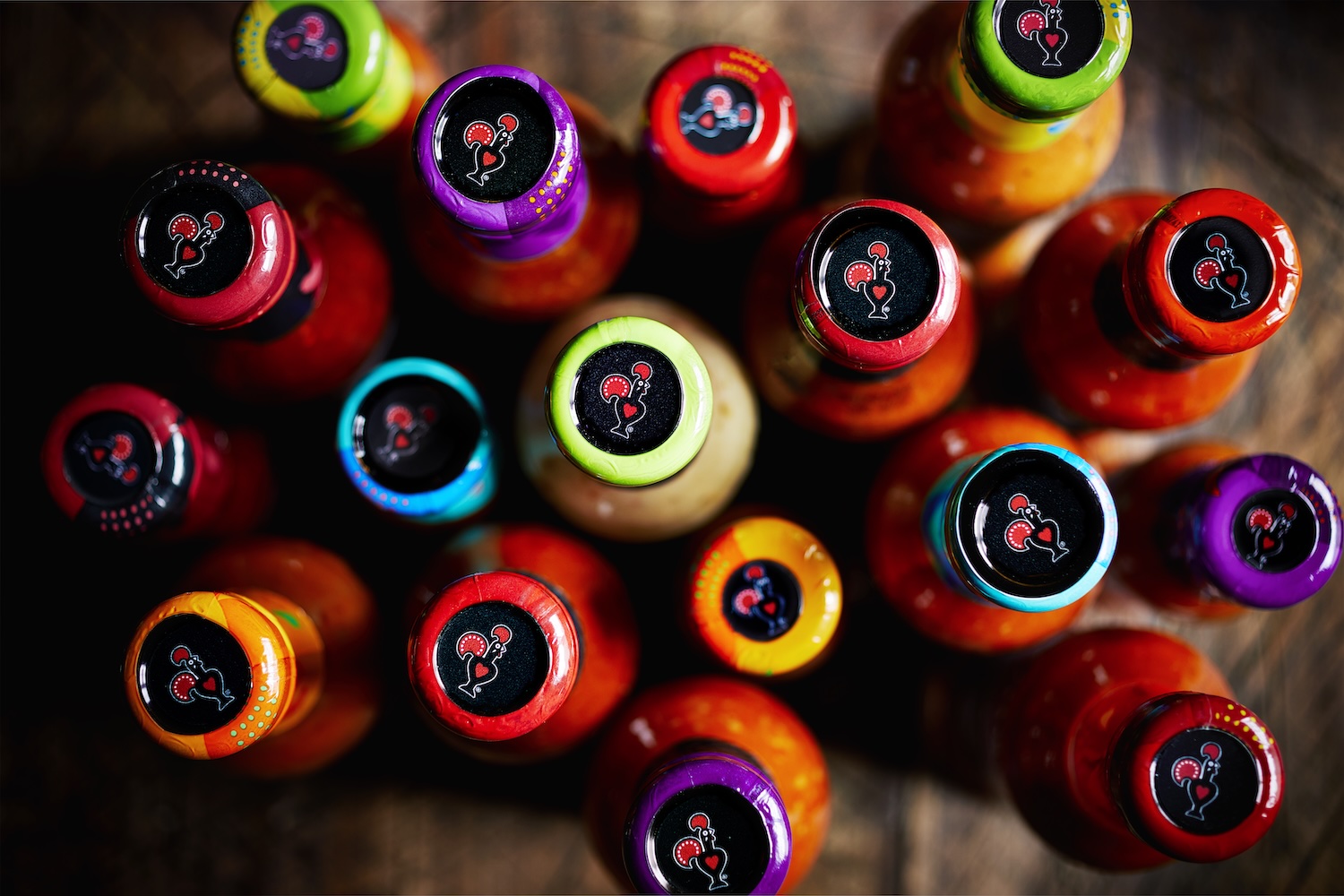
Can you tell us about your customer experience and what makes it unique?
Nando’s customer experience is particularly thought through. There are things that you would not even notice until they're pointed out that all add to that experience. So, every single touch point that you experience, either within a restaurant, through one of our drive thru channels, or even if you're just picking up food to take home and enjoy – every single one of those touch points is designed for a reason. It's designed very thoughtfully.
Almost everything in the Nando’s experience is also quite closely linked to our ‘shared value’ ethos as well. We prioritise sourcing from Southern African suppliers. We make sure that when you come into Nando's and you see the art on the wall that you know that it is not art that's mass produced. It's created by Southern African creatives, and we make sure they have a platform to be able to showcase their art to the world. Every piece of furniture is designed by a creator from Southern Africa. We give this platform to artists and creators to take their stuff to the world.
The packaging is very thoughtfully designed. Every little touch point is there for a reason. It's this obsession with giving customers an experience that they will get nowhere else, no matter which Nando's restaurant you walk into, every single one is different. They're all designed within their own right, within the communities that they show up in. Because of the interior designer or artist’s vision, every single one is different, because every single Nando’s experience should have a degree of feeling unique, a degree of personalization. It's part of our customer experience that makes us fundamentally different from anywhere else. You can't just buy a Nando's in a box. It's got to be curated. And again, it's that long term legacy ambition that shows through there, where we're not designing restaurants that last three years that you can turn over or shut down and move to the next location. They're designed to be part of the community, for people to be proud to come enjoy a meal in this amazing atmosphere with great food, which is very important because it's the core of the experience.
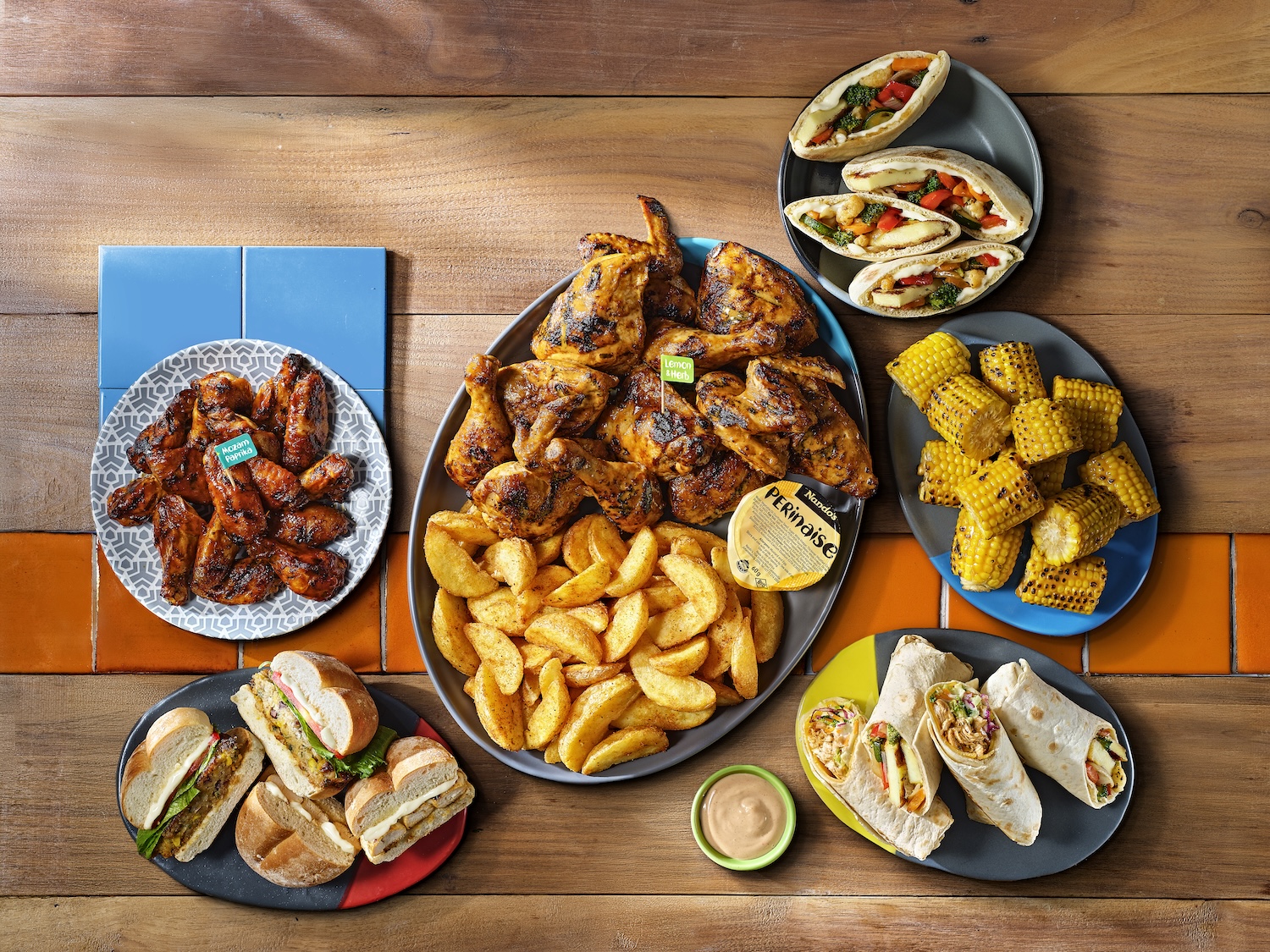
Although each Nando’s restaurant is unique, what’s the one emotion you hope customers feel after every visit (besides stuffed with delicious food)?
We would love for people to leave feeling inspired – we call it fired up. There's a part of that experience that is special and unique, that they know they wouldn't get some somewhere else. Whether it's a simple act of handing over food, or the ordering system, what is it that's part of the experience that only Nando's can do? What makes it unique or makes it feel like something a little bit more important, a little bit more creative, a little bit more inspiring than just sitting at a plastic table and chairs with a plastic tray and hoovering your food and moving on, right? We would love for people to appreciate the space. Everything is curated - the music, the art, the food – everything is so thought through. You get the most out of it when you're sitting in the space and you're experiencing it. So, we'd love people to leave feeling obviously satiated and enthusiastic about the food, but just a little bit more inspired than when they walked into the front door.
Obviously, it's different if you're an off-premise customer and you're taking the food home, but even then, we've brought the Nando’s personality and tone to the packaging, to make sure that you get a little bit of it, even if you take it home. So, napkins are a funny thing, because, again, if you were any other brand, you'd go and you would just give people napkins, right? But we understand that that's a brand touchpoint; that that's an opportunity to give a little bit of personality. So, the lines are made for a little giggle, made for a little smile, made for a little thought, which is exactly the feeling we want in our restaurants.
What has proven to work really, really well is merch. It's not promotional merchandise. It's well thought through, crafted Nando's merch. We're able to tell the stories of Nando's through our merch to young people, because we have thoughtfully thought through certain things. So, every piece of Nando's merch has got the red thread, which is a thread on the garment that is dyed with the African Birdseye chili that we grow in Mozambique and then we export across the world. So that thread creates an interesting conversation point for kids to say, ‘You see this heart here? This red is actually a chilli, and the chili comes from Mozambique.’ So, we find new ways in to be able to tell those stories. The merch is a great thing. People love merch and ours is not mass produced. It is locally curated with South African designers so that we can give back to creatives and then give them a platform. It's small batch, quite exclusive. If you get it, you're cool, because you can't buy it everywhere. You can get it at events. You can get it very thoughtfully, and that's a vehicle for us to tell stories in a different way.
.jpg)
What’s next for Nando’s on your brand journey?
It’s part of the evolution of business. Our culture doesn't change, and our values don't change, and we still have that entrepreneurial partly chaotic, partly magical mindset. But we now operate in a very different context, and particularly in the South African environment, that changes really frequently. You've got to take the time to just sit back do a bit of an objective deep dive. And that's difficult, right? If you try to objectively review your brand as the brand custodian, it's difficult to do that, but you've got to take a step back and say, ‘Okay, with our long-term outlook, and legacy creating thinking, what is the Nando's we need to start building today, so that my kids have a place that feels the same to them as what it feels like for me today?’ There's now a new generation of customers coming in, and they have different demands and different values. They have different ways of enjoying food that are foreign to us. You've got to keep up with the times. What we will never lose is that Challenger Mindset. But we've done it for so long, and particularly in the South African context, it was a very winning formula for us. However, the natural fallout of that is that other people will adopt it, and other people will start sounding and feeling awfully familiar to Nando’s, whether they're in the category or not, it doesn't really matter. So, we forged a new path back then and we need to now use this time to say, what’s next? What do we keep that is so true to us and so important to us that we hang on to it, but what do we have the courage to let go and do differently for a new generation of customers that are going to come in our doors?
How do you continue to embrace your Challenger Mindset while still combatting dull?
It's a considered effort. It's not a one off. We've been doing this for 37 years, and you've got to work hard at it every single day, because the world will throw things in your way that will tell you to change and tell you to conform. It will tell you to go back to the tried and tested and often overly measured way of doing things. It’s a lot of hard thinking, and it's not something you just shoot from the hip for either. It sounds very sexy and glamorous and agile and creative, but it's a thoughtful decision, and you've got to consider it. I've seen brands who have tried to go there, but it was clearly not thought through. It comes across as being crass or controversial or meaningless, because what they're trying to do is get attention rather than have impact. Of course, we want to get more attention, to box way above our league in terms of a spend perspective, but it's got to have a brand impact, not a short-term result. It's got to have some kind of equity building come from it. Otherwise, it's just noise and you get stuck in a habit of just putting out rubbish work. And that’s not only dull, consistently done, but it can actually be detrimental to your brand as well. So, you've got to think about it. You've got to have a long, hard think about it and, for heaven's sake, speak to people who know how these things work.
You can't just do it from a comms perspective. You have to do it throughout your experience. It doesn't help if you're a Challenger brand on the outside, but inside you're just a cookie-cutter, standard-operating-procedure-driven, robotic company. That kind of tension is always going to be cognitive dissonance for anybody. So, it's not a quick decision. It's got to be well thought through, and you've got to work at it every single day, because the world will put up those roadblocks. They will tell you, ‘No, just do something different. Just try this.’
It's hard. It's hard work, but it's absolutely worth it.
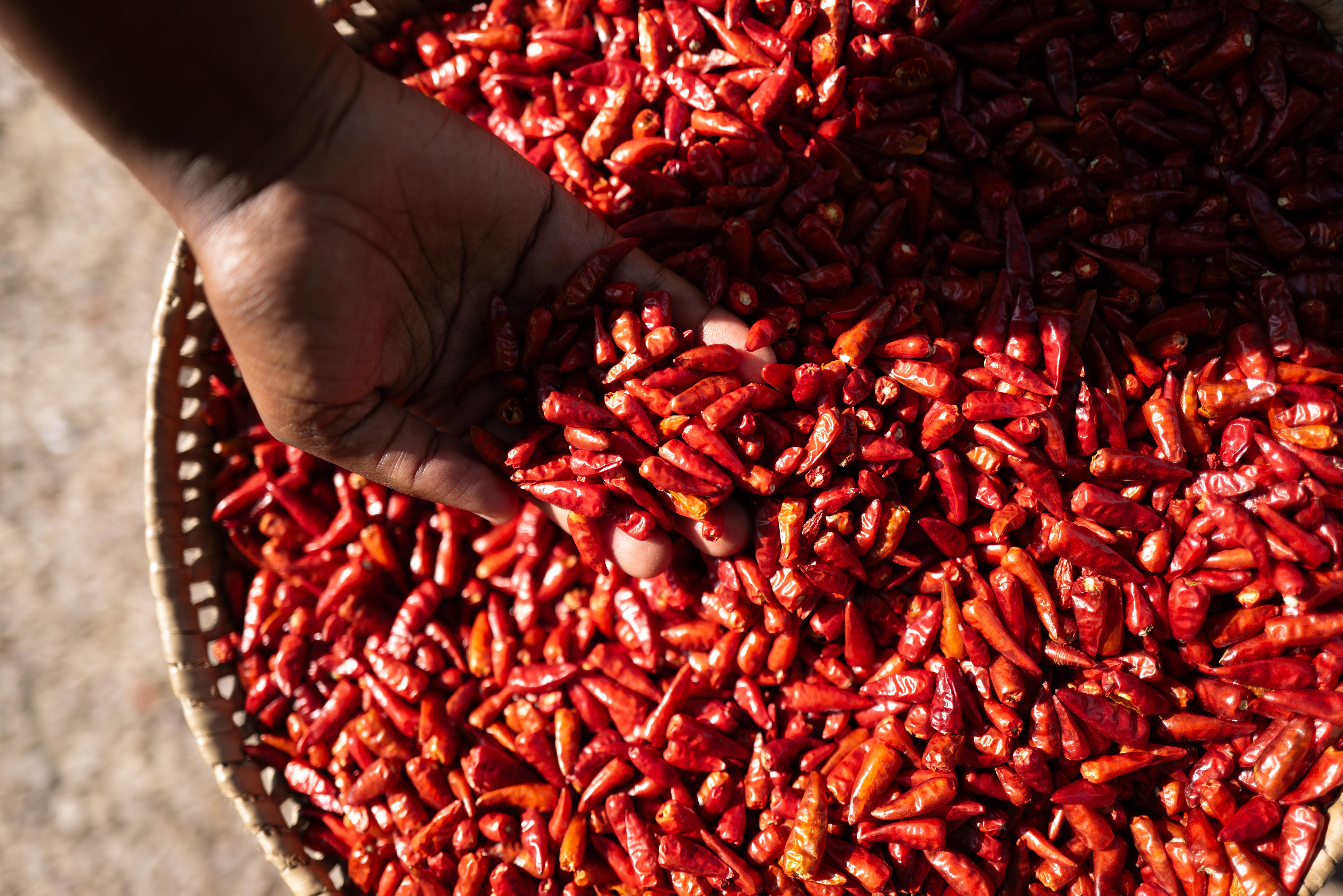
Nando’s has been around for several decades now. Can you tell us how the story of the brand has unfolded over the years?

Nando’s will be 38 in September and the company started much like any Challenger brand would, with two guys having lunch at this peri-peri chicken place and thinking, this is amazing, and the world needs to know about it. These were two guys who had no business being in the restaurant industry at all – neither of them had any experience in it. They just fell in love with the product, and they knew that this was something that firstly, South Africa, and now, eventually the world, deserved to have a taste of. So, the brand was born out of that Challenger Mindset.
So, they bought that chicken shop, and really, right from the onset, they had no choice but to do marketing in a different way. They had no money. They had no experience. Their first ad agency was paid in shares in the brand. Everything was patched together out of enthusiasm, and this will to share this amazing product with the world, and it's still very much the philosophy of where we're at today.
At the end of the day, we've got to return to the quality of the product and the way that customers experience that product, because it's very easy to get lost in all the opportunities, the advertising and the comms that sits out there. You've got to put the product at the centre. And that's the one thing about Nando's that is as true today as it was nearly 38 years ago when we opened the first store.
That enthusiasm is reflected in the way we communicate. It's reflected in our marketing strategies. We've got be bullish. We've got be positive. We've got be optimistic, often, in spite of the world crumbling around us at the best of times. So, we have a philosophy of acting like shop owners – imagine this was your one peri-peri chicken shop, and you were in charge of it. You have to make those decisions for this one store, instead of thinking about the 300+ we have in South Africa and the more than 1,000 we have around the world. You've got to think of it as that one little chicken shop. What decisions would you make, and how would you go to market if you were just doing it for this one little thing with no money?

We often say that one of the things that defines Challengers is that they are fighting against a monster – in society, culture, the category, etc. Thinking about your brand purpose, what is Nando’s fighting against?
I think that changes over time, right? The one thing that we often don't speak about is our Challenger Mindset. You don't have it and then just have it forever. You've got to consistently work at it. So, as we go along with time, that big monster in the room changes. It may have at some point been a big category player or a big competitor, but right now it's more of a societal impact. The role that Nando's as a brand, plays in South African society is very different now, because we're bigger, and we're a little bit more grown up. We've got more scale, so we have the opportunity to actually have real impact and influence the sentiment of the country on social media channels, in particular. So, that monster changes over time, because if you keep fighting the same monster, you feel it in the work, and you feel it in the teams, and you feel it in the way you go to market. It gets formulaic, and other people catch up. Other people start doing it, and you lose that Challenger positioning pretty quickly. You've got to keep looking out for the next monster. So, for us moving forward, that monster has a lot more to do with society and the impact that we can have, rather than pushing directly against a category competitor.
How do you dramatise that fight when it comes to your communications strategy?
We're pretty good at picking up the underlying message. So, it's really easy, particularly in this day and age, on social media to have a handful of listening tools which will just spit out the things that are trending or the things that people are talking about. But often, that's not what people want to hear. If you just latch on to the next trending topic or the football results, or the political climate, you'll get a pretty surface level thing, but we really try and uncover what it is that people want to be said on their behalf. There may be a topic of conversation about politics, and there's a lot of chatter about it online, but perhaps what people want said on their behalf is something slightly different. Hypothetically speaking, people may actually want to have a conversation about South Africa being strong enough and bold enough to stand on its own two feet. So, perhaps we don't need to engage with international politics and those kinds of things. It's always about finding that little layer underneath that is what people want to be said on their behalf. Because if you just reflect back what they're saying, it doesn't really get very far.

Our approach, particularly with social commentary, came from the fact that we were this Challenger brand. We were looking for ways to be involved in the conversation that didn't require oodles and oodles of media money, which we never had back in the day, and, quite frankly, we still don't have today. So, you've got to find interesting and smart ways to be a part of that conversation. We still say, we want to be part of the conversation. We don't want to lead a conversation; we don't want to start a conversation. We just want to give an interesting point of view or say what our audience wants to be said. It is very difficult and time consuming and particularly with the proliferation of social media, there are 40,000 opportunities a day to do something, and it can become quite overwhelming. So, we have a shortcut now to pick out the things that we'd like to engage with. We are now a global brand. We have a responsibility to be very conscious of the fact that we operate in other markets and that there are sensitivities there, culturally as well as societal, which we may not have an idea on. So, we've had to give ourselves guardrails, especially as the tone of some of the social media channels can be quite negative and bullying. So, we try to stay away from those ones, in particular. Our approach has shifted over time, but I think the ambition is still strong to be a part of the conversation and be the voice of the people – to say the things that people want to be said on their behalf when it matters.
Many of your comms are quite punchy. How do you overcome barriers within your organisation when it comes to more potentially risky communications ideas? And how do you motivate your team to take these risks?
It’s difficult. The more grown up and the bigger you get, the more the system is almost hedged against that. So, particularly from a marketing point of view, we can be super bullish about something, and we almost have to be. We have to be overly bullish, because we know that the process to get there, it's going to pull it back, right? You'll have finance people in the way and ops people and franchisees, and all sorts of people that may chip away at that idea. So, you actually have to overshoot it, knowing that there's a little bit of flex for it to be pulled back and to be something that realistically we can execute at scale. We do have a need to execute everything at scale, because we have 300+ restaurants on the ground, that this needs to show up in. So, we've always got to overshoot, knowing it's going to be pulled back. If you start with average and it gets nibbled away, then you have nothing. You almost have to go for the absolute shock factor, knowing that you're probably going to land on something special by the time everyone's had a bite at it.
How would you articulate the Nando’s brand ambition and what sets you apart from other businesses in your category?
Our ambition is to be the most loved brand, not the biggest, not the most profitable, just the most loved. We are led by visionaries; and we have very ambitious leadership who want to build a legacy brand, not a short-term results brand. This automatically puts us at an advantage, because we can afford to make the decisions that invest in customer experience that has a legacy impact. That investment has deep implications for the business and long term returns, as opposed to us worrying about the things that we do today that have to have a return tomorrow. That’s not to say we haven't been there. We've played, and we've burnt our fingers. We've learnt a bunch of things, but particularly in our category, when you're worried about the short-term results, you start putting the customer experience to the side, and you start looking at cost cutting, cost efficiencies, speed. Just turning tables as fast as you can, so that you can kind keep this monster going. But when you have a long-term outlook or a legacy ambition, it completely changes the game. We have the licence to invest in things today, knowing that potentially, the return is going to be three years or five years away, and that return may be made up of loads of different things altogether, rather than one big thing like discounting our food. It makes it easier to be able to do those things, because of the way we're structured and the general culture and attitude of the leadership team.

Can you tell us about your customer experience and what makes it unique?
Nando’s customer experience is particularly thought through. There are things that you would not even notice until they're pointed out that all add to that experience. So, every single touch point that you experience, either within a restaurant, through one of our drive thru channels, or even if you're just picking up food to take home and enjoy – every single one of those touch points is designed for a reason. It's designed very thoughtfully.
Almost everything in the Nando’s experience is also quite closely linked to our ‘shared value’ ethos as well. We prioritise sourcing from Southern African suppliers. We make sure that when you come into Nando's and you see the art on the wall that you know that it is not art that's mass produced. It's created by Southern African creatives, and we make sure they have a platform to be able to showcase their art to the world. Every piece of furniture is designed by a creator from Southern Africa. We give this platform to artists and creators to take their stuff to the world.
The packaging is very thoughtfully designed. Every little touch point is there for a reason. It's this obsession with giving customers an experience that they will get nowhere else, no matter which Nando's restaurant you walk into, every single one is different. They're all designed within their own right, within the communities that they show up in. Because of the interior designer or artist’s vision, every single one is different, because every single Nando’s experience should have a degree of feeling unique, a degree of personalization. It's part of our customer experience that makes us fundamentally different from anywhere else. You can't just buy a Nando's in a box. It's got to be curated. And again, it's that long term legacy ambition that shows through there, where we're not designing restaurants that last three years that you can turn over or shut down and move to the next location. They're designed to be part of the community, for people to be proud to come enjoy a meal in this amazing atmosphere with great food, which is very important because it's the core of the experience.

Although each Nando’s restaurant is unique, what’s the one emotion you hope customers feel after every visit (besides stuffed with delicious food)?
We would love for people to leave feeling inspired – we call it fired up. There's a part of that experience that is special and unique, that they know they wouldn't get some somewhere else. Whether it's a simple act of handing over food, or the ordering system, what is it that's part of the experience that only Nando's can do? What makes it unique or makes it feel like something a little bit more important, a little bit more creative, a little bit more inspiring than just sitting at a plastic table and chairs with a plastic tray and hoovering your food and moving on, right? We would love for people to appreciate the space. Everything is curated - the music, the art, the food – everything is so thought through. You get the most out of it when you're sitting in the space and you're experiencing it. So, we'd love people to leave feeling obviously satiated and enthusiastic about the food, but just a little bit more inspired than when they walked into the front door.
Obviously, it's different if you're an off-premise customer and you're taking the food home, but even then, we've brought the Nando’s personality and tone to the packaging, to make sure that you get a little bit of it, even if you take it home. So, napkins are a funny thing, because, again, if you were any other brand, you'd go and you would just give people napkins, right? But we understand that that's a brand touchpoint; that that's an opportunity to give a little bit of personality. So, the lines are made for a little giggle, made for a little smile, made for a little thought, which is exactly the feeling we want in our restaurants.
What has proven to work really, really well is merch. It's not promotional merchandise. It's well thought through, crafted Nando's merch. We're able to tell the stories of Nando's through our merch to young people, because we have thoughtfully thought through certain things. So, every piece of Nando's merch has got the red thread, which is a thread on the garment that is dyed with the African Birdseye chili that we grow in Mozambique and then we export across the world. So that thread creates an interesting conversation point for kids to say, ‘You see this heart here? This red is actually a chilli, and the chili comes from Mozambique.’ So, we find new ways in to be able to tell those stories. The merch is a great thing. People love merch and ours is not mass produced. It is locally curated with South African designers so that we can give back to creatives and then give them a platform. It's small batch, quite exclusive. If you get it, you're cool, because you can't buy it everywhere. You can get it at events. You can get it very thoughtfully, and that's a vehicle for us to tell stories in a different way.
.jpg)
What’s next for Nando’s on your brand journey?
It’s part of the evolution of business. Our culture doesn't change, and our values don't change, and we still have that entrepreneurial partly chaotic, partly magical mindset. But we now operate in a very different context, and particularly in the South African environment, that changes really frequently. You've got to take the time to just sit back do a bit of an objective deep dive. And that's difficult, right? If you try to objectively review your brand as the brand custodian, it's difficult to do that, but you've got to take a step back and say, ‘Okay, with our long-term outlook, and legacy creating thinking, what is the Nando's we need to start building today, so that my kids have a place that feels the same to them as what it feels like for me today?’ There's now a new generation of customers coming in, and they have different demands and different values. They have different ways of enjoying food that are foreign to us. You've got to keep up with the times. What we will never lose is that Challenger Mindset. But we've done it for so long, and particularly in the South African context, it was a very winning formula for us. However, the natural fallout of that is that other people will adopt it, and other people will start sounding and feeling awfully familiar to Nando’s, whether they're in the category or not, it doesn't really matter. So, we forged a new path back then and we need to now use this time to say, what’s next? What do we keep that is so true to us and so important to us that we hang on to it, but what do we have the courage to let go and do differently for a new generation of customers that are going to come in our doors?
How do you continue to embrace your Challenger Mindset while still combatting dull?
It's a considered effort. It's not a one off. We've been doing this for 37 years, and you've got to work hard at it every single day, because the world will throw things in your way that will tell you to change and tell you to conform. It will tell you to go back to the tried and tested and often overly measured way of doing things. It’s a lot of hard thinking, and it's not something you just shoot from the hip for either. It sounds very sexy and glamorous and agile and creative, but it's a thoughtful decision, and you've got to consider it. I've seen brands who have tried to go there, but it was clearly not thought through. It comes across as being crass or controversial or meaningless, because what they're trying to do is get attention rather than have impact. Of course, we want to get more attention, to box way above our league in terms of a spend perspective, but it's got to have a brand impact, not a short-term result. It's got to have some kind of equity building come from it. Otherwise, it's just noise and you get stuck in a habit of just putting out rubbish work. And that’s not only dull, consistently done, but it can actually be detrimental to your brand as well. So, you've got to think about it. You've got to have a long, hard think about it and, for heaven's sake, speak to people who know how these things work.
You can't just do it from a comms perspective. You have to do it throughout your experience. It doesn't help if you're a Challenger brand on the outside, but inside you're just a cookie-cutter, standard-operating-procedure-driven, robotic company. That kind of tension is always going to be cognitive dissonance for anybody. So, it's not a quick decision. It's got to be well thought through, and you've got to work at it every single day, because the world will put up those roadblocks. They will tell you, ‘No, just do something different. Just try this.’
It's hard. It's hard work, but it's absolutely worth it.

Putting the joy back into work (with Bruce Daisley)
If work takes up so much of our lives, and so much of work’s output is down to discretionary effort, how do we make work more engaging - as leaders of teams, and as workers ourselves?
Bruce Daisley has become a world expert on it. Previously the MD of YouTube in the UK, Bruce was the European Head of Twitter when he started exploring the meaning and future of work in a podcast, Eat Sleep Work Repeat. His first book, The Joy of Work, was a Sunday Times number one business bestseller and an FT Book of the Month. He is also the host of the hugely successful podcast ‘Eat Sleep Work Repeat’.
In this episode Adam and Bruce first discuss how to get rid of the things that suck the joy out of work, and then how to create a positive buzz in our engagement, as an individual and as a team.
They talk about:
- What the really big disruption in work has been (and it’s not wfh)
- The essential foundations for making any impact whatsoever on engagement in a culture
- The two key indicators of real engagement at work
- Why idle time is so important
- The real enemy of productivity in an organisation
- The power of Positive Affect
- The surprising importance of laughter
And why, when so much is known about how to drive up engagement at work, so little of that knowledge makes it into the leadership meetings of big organisations.
Listen to Eat Sleep Work Repeat:
Apple: https://podcasts.apple.com/gb/podcast/eat-sleep-work-repeat/id1190000968
Spotify: https://open.spotify.com/show/5KUW5Lu36O4nnfIFqIIUh4
Bruce's books:
The Joy of Work: 30 Ways to Fix Your Work Culture and Fall in Love with Your Job
Fortitude: The Myth of Resilience, and the Secrets of Inner Strength
__
Follow Adam on Linkedin: https://www.linkedin.com/in/adam-morgan-3a473a/
Let's Make This More Interesting is a podcast from eatbigfish. Thanks to our editor Ruth, our producer Travis, and to Tiny Podcasts.
Lessons, Frameworks, Power and Sex (a look back at Season 1)
In this bonus episode Adam summarises the key themes and learnings across all the guests from the first season, to make it useful and usable for you.
He breaks his conclusions into five sections:
1. The Cost of Dull and the Value of Interesting
2. The Four Kinds of Dull
3. Finding the right way to be interesting for you
4. Common themes and key ideas across all the guests
5. How to use it
Read the full transcript of the episode at The Challenger Project.
---------
Connect with Adam on LinkedIn: https://www.linkedin.com/in/adam-morgan-3a473a/
Follow eatbigfish on Linkedin and Instagram
With thanks to our editor Ruth and producer Ross.
Leading the world towards hope (with Gail Gallie)
We’re at an inflection point in how we engage people about the UN’s Sustainable Development Goals, Gail Gallie believes: we now need a completely new model – ‘The gloves are off’. Gail left a successful career in advertising and at the BBC to help set up Project Everyone with campaigner and film director Richard Curtis – their aim: to communicate the UN’s Sustainable Development Goals to everyone in the world in one week. 10 years later, she remains a relentless campaigner and innovator around communicating the SDGs, including the podcast she hosts with Loyiso Madinga, ‘An Idiot’s Guide to Saving The World’.
In this week's episode, Gail and Adam discuss:
- How the combination of a big ambition and a fierce time constraint drove breakthrough solutions for Project Everyone
- The new context: how the whole world has changed, and we need to move on from the old model now
- What this new model of impact campaigning should look like
- The role of surprise here, and how to get the most value from it
- Why the creative campaigning community now has to go for broke
- What it means to engage people in the conversation where they care when it comes to the SDGs, and in language they can relate to
And, in Richard Curtis’ words ‘What is the sound of hope we can make against the noise of despair?’
__
Follow Adam on Linkedin: https://www.linkedin.com/in/adam-morgan-3a473a/
Let's Make This More Interesting is a podcast from eatbigfish. Thanks to our editor Ruth, our producer Travis, and to Tiny Podcasts.
Giving up the gold (with Nick Reed)
Named ‘one of the most 10 influential Brits in Hollywood’ by The Sunday Times, Nick Reed has been a successful Hollywood agent, won an Oscar for a documentary called ‘The Lady in Number 6’, and co-founded the most successful viral content company in the US.
In this episode, Nick discusses with Adam what makes something not just more interesting, but interesting enough to share – along with what it’s like to celebrate winning an Oscar with Bill Murray, how to get cast in a Steven Spielberg film, and how to get a Hollywood studio to buy a writer that nobody wants to buy. And at the heart of Nick’s philosophy is what he calls ‘giving up the gold’: giving value to the other person early, without expecting anything in return. A longer episode that ends this first season, we hope you enjoy it.
Nick's company - Shareability: https://www.shareability.com/
Follow Nick on Linkedin: https://www.linkedin.com/in/nick-reed-79269731/
Watch Nick's Oscar winning film, The Lady in No. 6, here: http://nickreedent.com/
---------
Connect with Adam on LinkedIn: https://www.linkedin.com/in/adam-morgan-3a473a/
Follow eatbigfish on Linkedin and Instagram
With thanks to our editor Ruth and producer Ross.
Interesting at the speed of culture (with Nick Tran)
Is TikTok the most interesting platform in the world? What’s at the heart of its success – and what does it mean to be more interesting in a post TikTok world, when the audience on TikTok is “10x bigger every day than the Super Bowl”?
In this week’s episode, Adam meets Nick Tran, former Global Head of Marketing at TikTok and advisor to a new generation of Challengers, including tech company Nothing. Nick brings his experience as a marketer, advisor and investor to discuss:
- How TikTok has changed the playing field for a new generation of brands
- How he led ‘Project Cheetah’ to reduce TikTok’s campaign development cycle from 10 weeks to a few days.
- The creativity that financial and time constraints force you to develop
- Why he always looks for win-win-win partnerships
- Learning how to create a ’must-see’ piece of creative work
- Why he believes in moving creative in-house to speed up social
- The need for a balanced diet of marketing measurement beyond KPIs and ROI
__
Connect with Nick on Linkedin: https://www.linkedin.com/in/nicholastran/
Follow Adam on Linkedin: https://www.linkedin.com/in/adam-morgan-3a473a/
Let's Make This More Interesting is a podcast from eatbigfish. Thanks to our editor Ruth, our producer Travis, and to Tiny Podcasts.
The third American art form (with Russell Davies)
Powerpoint has become the poster child of Dull – can even this most maligned of mediums really be a tool to be more interesting? Russell Davies not only believes it can, but that it’s the third American art form, along with jazz and hip hop – but only if we think of it and use it in a very different way. It seems such a symbolic flip for the cliché of ‘Death by Powerpoint’, that we’ve given it its own short episode. Here Russell shares his very simple rules for really engaging an audience through Powerpoint.
Russell's book: Do Interesting. Notice. Collect. Share.
https://thedobook.co/products/do-interesting-notice-collect-share
_______
Connect with Adam on LinkedIn: https://www.linkedin.com/in/adam-morgan-3a473a/
Follow eatbigfish on Linkedin and Instagram
With thanks to our editor Ruth and producer Ross.
Creating character at Dishoom (with Sara Stark)
For 10 years Sara Stark was part of the team helping the founders of Dishoom build their restaurant brand and business – a brand that is as rich, engaging and layered as so many other restaurants are superficial and glib.
It’s a conversation about stories, and curiosity, and inventiveness, and layering, and pushing the idea. About a continual commitment to exploring and digging and experimenting and keeping things fresh. About thinking about what it means to be different, genuinely different and engaging, in a way that seems entirely unlike the rest of the business.
If you are remotely interested in brand building, experience or culture the Dishoom story is an inspiration.
Connect with Sara on Linkedin https://www.linkedin.com/in/sara-stark-creative-marketing/
Explore the layers of the Dishoom story at https://www.dishoom.com/
__
Follow Adam on Linkedin: https://www.linkedin.com/in/adam-morgan-3a473a/
Let's Make This More Interesting is a podcast from eatbigfish. Thanks to our editor Ruth, our producer Travis, and to Tiny Podcasts.
Making the magic more probable (with Russell Davies)
One of the most stimulating speakers in brands and communications, Russell has been thinking about what it means to be interesting for over 20 years. In his new book Do Interesting – Notice. Collect. Share. Russell has codified the practice he’s used to make the world more interesting to him, and to make himself better positioned to bring interest to whatever topic he finds himself working on, inside and outside the world of brands. In this episode he shares how we can do it easily, too.
https://thedobook.co/products/do-interesting-notice-collect-share
_______
Connect with Adam on LinkedIn: https://www.linkedin.com/in/adam-morgan-3a473a/
Follow eatbigfish on Linkedin and Instagram
With thanks to our editor Ruth and producer Ross.
The question is more important than the answer (with Warren Berger)
Warren Berger began exploring how to ask better questions through a journalistic interest in innovation. He’s come to believe the importance of questions is much broader than that, and has come on to champion the development of better questioning skills in everything from education to our personal relationships.
He has written widely on the topic, including ‘A More Beautiful Question: The power of inquiry to spark breakthrough ideas’.
In a discussion of some of his central findings and ideas we talk about:
- Why the question can be more important than the answer
- What makes a question dull or interesting
- How a good question shifts things
- The power of ‘Questionstorming’
- How a good question ‘attracts’ answers
- His three part model to asking better questions
- Why businesses should think about having Mission Questions, rather than Mission Statements
And the power for all of us in having three big questions that guide our lives.
Find out about Warren's books on his website: https://warrenberger.com/warren-bergers-books/
__
Connect with Adam on Linkedin: https://www.linkedin.com/in/adam-morgan-3a473a/
Let's Make This More Interesting is a podcast from eatbigfish. Thanks to our editor Ruth, our producer Travis, and to Tiny Podcasts.
Lashing the world with story (with John Yorke)
While storytelling isn’t the automatic answer to every kind of ‘dull’, if we’re going to learn how to tell more interesting stories we should learn from the best. John Yorke founded the BBC Studio Writer’s Academy after a career that included being Head of Channel4 Drama and Controller of BBC Drama Production, working on and producing some of the world’s most widely viewed and critically acclaimed TV drama, from EastEnders to Shameless, Life on Mars and Wolf Hall. In this episode, he shares with Adam his learnings about how we can all tell a story that will really engage our audience.
Read John’s book: Into The Woods: How stories work and why we tell them
John’s company and training services: https://www.johnyorkestory.com/
_______
Connect with Adam on LinkedIn: https://www.linkedin.com/in/adam-morgan-3a473a/
Follow eatbigfish on Linkedin and Instagram
With thanks to our editor Ruth and producer Ross.
How to tell a big story in just 90 seconds (with Louisa Preston and Luisa Baldini)
How do you engage an audience in something that really matters in just 90 seconds? Where do you start? How do you overcome the ‘curse’ of everything you know?
In this episode Adam talks with two former BBC reporters, Louisa Preston and Luisa Baldini, about how they become experts in being compelling in 90 seconds, in careers where they covered everything from the 7/7 bombings and the Amanda Knox trials to interviewing Richard Gere on the red carpet. They now have their own business, Composure Media, that helps executives become brilliantly succinct themselves.
They discuss:
- Their model for engaging in 90 seconds: ‘Hook, Line, and Sinker’
- Why you should always start with your strongest ‘picture’
- Overcoming the curse of expertise
- The importance of the story that only you know
- How to manage a confidence crisis
- What to do when your Hollywood star goes rogue on live TV
And we close by discussing a big part of their work today: helping female executives develop a more confident elevator pitch and presence.
Find out about Louisa and Luisa's work here: https://www.composure.media/
___________
Connect with Adam on Linkedin: https://www.linkedin.com/in/adam-morgan-3a473a/
Let's Make This More Interesting is a podcast from eatbigfish. Thanks to our editor Ruth, our producer Travis, and to Tiny Podcasts.
The interesting Squiggle and the long ‘Aha’ (with Helen Tupper and Sarah Ellis)
The Squiggly Careers podcast has been hugely influential and useful for anyone interested in Career Development community. In this episode I talk to Sarah Ellis and Helen Tupper, the brilliant pair behind the podcast, the two bestselling books that have come out of it – Squiggly Careers and You Coach You – and the company they have founded, Amazing if.
We discuss:
- How, in looking to throw out the old model of the ‘career ladder’, they arrived at that fascinating idea and language of the ‘squiggle’
- How they’ve found a much more engaging way to talk to people about confidence issues, and why it works
- Why dullness in large organisations is often a kind of conformity
- How to be a ‘helpful rebel’ in big companies if you want to help shake up dull practices
Along the way, they talk about a fascinating idea: ‘the long aha’ – that realisation that comes to you sometime after an engaging moment in a meeting, prompting you to question something you are doing, when you realise how pervasive that practice and issue has been in your life. As fascinating and useful as you would expect from the inimitable Sarah and Helen.
Listen to the Squiggly Careers podcast
Find out more about Amazing If's work
Helen and Sarah's books:
________
Connect with Adam on LinkedIn: https://www.linkedin.com/in/adam-morgan-3a473a/
Follow eatbigfish on Linkedin and Instagram
With thanks to our editor Ruth and producer Ross.
The five components of interesting (with Jeffre Jackson and Dave Nottoli)
This week Adam talks to renowned planners David Nottoli and Jeffre Jackson about their research into ‘interestingness’ in advertising.
Drawing from their experience David and Jeffre share their definition of the five key components of interesting:
- How incongruity reinforces memory
- Why Don Draper might be wrong about emotions
- The significance of fish sticks
- Why authenticity isn’t just a buzzword
- Why the details really matter, even if 99% of people don’t notice them
We also learn why we should avoid chasing empty spectacle in the battle for attention, why Nike’s legendary work with athletes can’t be replicated by just any sports brand, what the classic Cadbury’s Gorilla ad teaches us about mystery, and the risk of being sucked into the ‘boreplex’.
Watch Jeffre’s 2006 video on Interestingness: how interesting ads work differently, and what value Interestingness delivers for marketers.
Nike x Charles Barkley “I am not a role model”
Nike x Tiger Woods "I Am Tiger Woods"
___________
Connect with Adam on Linkedin: https://www.linkedin.com/in/adam-morgan-3a473a/
Let's Make This More Interesting is a podcast from eatbigfish. Thanks to our editor Ruth, our producer Travis, and to Tiny Podcasts.
Two thousand years more interesting (with Professor Arlene Holmes-Henderson)
In this episode we talk to Professor Arlene Holmes-Henderson, Professor of Classics Education and Public Policy at Durham University, about her fierce belief in the enduring relevance of classical rhetoric to today’s world, and why its value in helping disadvantaged children find their voice in a more engaging way is fundamental to how schools need to develop oracy, alongside literacy and numeracy. And at the end, she gives a 10-minute masterclass in classical rhetoric that we can all use to make a speech more interesting.
_____________
Arlene's books Forward with Classics and Expanding Classics
The ‘Shy bairns get nowt’ project https://www.durham.ac.uk/news-events/latest-news/2023/05/shy-bairns-get-nowt/
Arlene's work in The Guardian https://www.theguardian.com/education/2023/jun/04/brucey-and-caesar-can-help-children-improve-oracy-says-classic-professor
Connect with Adam on LinkedIn: https://www.linkedin.com/in/adam-morgan-3a473a/
Follow eatbigfish on Linkedin and Instagram
With thanks to our editor Ruth and producer Ross.
Does our attention define us? (with Faris Yakob)
Faris Yakob believes that attention is not merely the first step to engagement with something, but a fundamental shaper of who we are: if ‘we are what we eat’, then what we pay attention to comes to define us.
The author of ‘Paid Attention’ and co-founder of Genius Steals, he and his wife Rosie have spent the last ten years as modern nomads, consulting, speaking and writing. In this episode Adam and Faris discuss:
- How Faris’ diverse career and nomadic life has been ‘a quest for interesting’
- Why attention is part of the substance of our existence
- Why it is impossible to buy attention today …
- …And yet everyone is still competing for our attention all the time
- Strategies for earning attention in a saturated media age
- Why the ‘most interestingness’ comes in the connection of domains that are not obviously connected
Follow Faris on Linkedin: https://www.linkedin.com/in/farisyakob/
Subscribe to Faris and Rosie's substack 'Strands of Genius': https://geniussteals.substack.com/
Connect with Adam on Linkedin: https://www.linkedin.com/in/adam-morgan-3a473a/
Let's Make This More Interesting is a podcast from eatbigfish. Thanks to our editor Ruth, our producer Travis, and to Tiny Podcasts.
How to win a peacock show (with Gemma Parkinson)
This is a podcast for people who can’t afford to bore their audience. And in this episode we talk to Gemma Parkinson, a Global Marketing and Business Director at Moet Hennessy, about how to elevate a presentation into an irresistible performance when you really need to carry an audience with you. A fresh, energetic and charismatic thinker, Gemma shares her advice about how to elevate the interest when it really matters.
____
Connect with Adam on LinkedIn: https://www.linkedin.com/in/adam-morgan-3a473a/
Follow eatbigfish on Linkedin and Instagram
With thanks to our editor Ruth and producer Ross.
Does our attention define us? (with Faris Yakob)
That’s enough about humour and the lighter side of interesting.
It’s time to step into the dark.
This week Adam meets researcher Mathias Clasen, co-founder of the ‘Recreational Fear Lab’ and author of Why Horror Seduces and A Very Nervous Person's Guide to Horror Movies, to talk about what he’s learned from haunted houses and horror movies, and how to find the ‘sweet spot’ of scary.
Adam and Mathias discuss:
- The definition of ‘recreational fear’, and why it’s not just for horror film fans
- The evidence that shows why fear is good for us. Why children need more ‘risky play’ for their development than we are giving them, and the surprising results of Mathias’ research into fear on our immune systems
- The physiological and cognitive relationship between fear and enjoyment
- Why we should all make friends with Mr Piggy
_
Read Mathias's books:
A Very Nervous Person's Guide to Horror Movies
Watch Mathias's TedX talk: Lessons from a terrified horror researcher
Connect with Adam on Linkedin: https://www.linkedin.com/in/adam-morgan-3a473a/
Let's Make This More Interesting is a podcast from eatbigfish. Thanks to our editor Ruth, our producer Travis, and to Tiny Podcasts.
On Saturn it’s raining diamonds (with Addison Brown)
How can we be interesting enough to stick in our audiences’ long-term memory? In this episode, Adam speaks to Addison Brown, the science teacher who was the star of a recent Department for Education recruitment film. They discuss the four key principles that underpin success in every lesson – from cognitive load to dual coding – and how shorter pupil attention spans and higher expectations have driven a ‘blossoming of imagination within teaching'.
'Every Lesson Shapes a Life': https://www.youtube.com/watch?v=aGd_Rrs-qNY
Brian Cox asks 'what more do you want?" https://www.youtube.com/watch?v=7uqa2TMzag4
_________
Connect with Adam on LinkedIn: https://www.linkedin.com/in/adam-morgan-3a473a/
Follow eatbigfish on Linkedin and Instagram
With thanks to our editor Ruth and producer Ross.
Stand up and make me laugh (with Chris Head)
Last week’s episode made the business case for humour - but how do we start to find our funny? This week Adam Morgan meets standup comedy writing and speaking coach Chris Head for a comedy masterclass.
Chris shares practical experience and techniques he uses when working with comedians, how he helped stand-up Stepfania Licari push her personal stories for the biggest payoff and coached Richard Lindesay to become a headliner (and TikTok star), all while punching up Adam’s jokes along the way,
They discuss:
- The power of comedy to help engage people with serious and challenging subjects
- Simple techniques to build humour and surprise into anything from a story to an internal announcement
- The importance of making an immediate connection with the audience to break the tension
- The craft involved to go from a joke-shaped thought into a bigger, funnier routine
- The power of misdirection (but not the magic kind)
_____
Contact Chris (or sign up to a course): https://www.chrishead.com/
Chris’s books:
Creating Comedy Narratives for Stage and Screen
A Director's Guide to the Art of Stand-up
The Complete Comedy Script Toolkit
_____
Connect with Adam on Linkedin: https://www.linkedin.com/in/adam-morgan-3a473a/
Let's Make This More Interesting is a podcast from eatbigfish. Thanks to our editor Ruth, our producer Travis, and to Tiny Podcasts.
The secret of Elmo’s success (with Norman Stiles)
In this episode, Adam talks with Norman Stiles, for 20 years the Head Writer on Sesame Street, about the pioneering pairing of entertainers and educators that changed the educational life of a generation. And how success lay in a very simple ambition that has fascinating implications for us all. Sesame Street made something possible that people thought couldn’t be done. What can it teach us about the audiences we want to really engage?
Watch the classic Sesame Street scenes that Norman refers to during the conversation:
- Grover really wants us to learn near and far
- Ernie answers the Count's telephone
- Telly tries to help Elmo get over his fear of clowns
- Big Bird learns about 'just because' and says goodbye to Mr Hooper
----
Connect with Adam on LinkedIn: https://www.linkedin.com/in/adam-morgan-3a473a/
Follow eatbigfish on Linkedin and Instagram
With thanks to our editor Ruth and producer Ross.
The commercial case for humour (with Bridget Angear)
Is our business leaving money on the table by being too serious? In this episode, Adam speaks to Bridget Angear, legendary strategic planner and co-founder of Craig + Bridget, about her recent research “The Business Case for Humour in Advertising”.
Adam and Bridget explore the evidence for the business effects of humour as revealed in the IPA database, and the different values that different types of humour can have for us if we’re looking to be more engaging.
They look at why marketing and communications might be less entertaining now than it used to be, and they consider why agencies and clients seriously need to have a bit more fun.
Because, despite the business case for humour, have we all become just too scared to be funny?
--
Connect with Adam on Linkedin: https://www.linkedin.com/in/adam-morgan-3a473a/
Watch Bridget deliver “The Business Case for Humour in Advertising” here: http://youtube.com/watch?v=r91B08Xebtg
Bridget's books -
- The insiders' guide to advertising: How the business of advertising really works
- Creative problem solving.: A useful little strategy book by craig+bridget
- Revolt: A movement owner's manual
--
Let's Make This More Interesting is a podcast from eatbigfish. Thanks to our editor Ruth, our producer Travis, and to Tiny Podcasts.
Who Are You Really? (with Ross Buchanan)
In this episode, Adam talks to national radio presenter Ross Buchanan (Absolute Radio, Radio X) about what it takes to be interesting for four hours with an audience you never actually see. How much is it about being more interesting in what you say and do, and how much is it about what you share of yourself? And why shouldn’t you talk about biscuits?
-
Connect with Adam on LinkedIn: https://www.linkedin.com/in/adam-morgan-3a473a/
Follow eatbigfish on Linkedin and Instagram
With thanks to our editor Ruth and producer Ross.
Break that routine (with Simon Peacock)
This week Adam meets award-winning improviser and director of the iconic Assassin’s Creed video games Simon Peacock to explore how the element of surprise makes his work and life more interesting.
Beginning with Simon’s early success as a professional improviser in Montreal, they discuss the 10 commandments of good improvisation, why routine and repetition ruin a performance, and what happens when you apply improv principles to your own wedding.
In the second half, Simon shares what it takes to give a more interesting audition, his experience as a director in the world of video games, and why audiences crave surprise.
We find out what preparation it takes to direct 2,000 lines of dialogue in one day, why it’s always a good idea to deliver a unique take in an audition (even if it doesn’t land you the job), and the terrible fate of a canvas sack called Bob.
__
Connect with Adam on Linkedin: https://www.linkedin.com/in/adam-morgan-3a473a/
Let's Make This More Interesting is a podcast from eatbigfish. Thanks to our editor Ruth and our producers at Tiny Podcasts.
Why Your Dog is a Better Producer Than You (with Maz Farrelly)
In this episode, Adam speaks to reality TV producer Maz Farrelly. Maz has made some of the biggest shows on 3 continents, including Britain’s Got Talent, Dancing with the Stars, Big Brother and Celebrity Apprentice – interviewing 12,000 hopefuls along the way. She now works with businesses to help them make themselves more interesting.
Maz shares her learnings on what it takes to really engage an audience, the three secrets of great content, and how to be interesting enough to get cast in one of her shows. Along the way, we discuss:
- Why, if you’re ambitious, you have to see everything as a ‘production’
- How your dog produces you to get what it wants
- What ‘white noise’ is, and why it matters
- How to interview well enough to get into the Big Brother house
- Why many of us have become lazy producers, particularly in big companies
- When ‘fine’ isn’t good enough if you want to be the Number 1 Show
- Asking the questions to discover the interesting story in everyone (and how to make a dull person interesting for a TV audience)
- Why you can only last for a week before you ‘leak’
- The power of subverting expectations as a producer
- The recipe for great content on television (and how to play Susan Boyle Bingo)
- The importance of really ‘scratching’ to get to what’s interesting
- Three bits of advice on how to be a great producer and be more interesting
- How to apply this to our business and personal life
Maz is as fascinating as she is funny. We hope you enjoy this wonderfully stimulating conversation with someone who makes everything she does a little more interesting.
__
Find out about Maz's work here: https://www.mazspeaks.com/
Follow Maz on Linkedin: https://www.linkedin.com/in/maz-speaks/
Connect with Adam on LinkedIn: https://www.linkedin.com/in/adam-morgan-3a473a/
Follow eatbigfish on Linkedin and Instagram
With thanks to our editor Ruth and producer Ross.
Why you need a third Spider Drop (with Heather McGill)
In this episode Adam talks to Heather McGill, Head of Spectator Experience at London 2012 and previously Tour Manager for the Spice Girls, about how to create more interesting shared experiences.
Heather shares lessons about how to create more engaging spectator experiences for live tours and ‘global mega events’ such as the Olympics and Paralympics, large industry expos like Dubai 2020, and her current project, the Harry Potter Forbidden Forest, which has sold over a million tickets.
In a wide-ranging conversation that spans her career Heather reveals insights on:
- The real competition when you are designing experiences
- How to structure the development of an experience
- The importance of the lull, as well as the high
- What exponentially changing audience expectations really means for being more interesting in experience today
- Sir Jonny Ive’s one piece of advice on designing the London 2012 experience
- The three ways to tackle a problem in the experience
- The value of creating common ownership
- How constraints make the experience better
- How to build wonder
…Oh, and why the third spider drop makes all the difference.
___
Find out more about Heather’s work: https://www.unifyexp.com/
The Harry Potter Forbidden Forest Exerience: https://hpforbiddenforestexperience.com/
Connect with Adam on Linkedin: https://www.linkedin.com/in/adam-morgan-3a473a/
Follow eatbigfish on Linkedin and Instagram
The Cost of Dull in Business (with Peter Field)
In this opening episode, Adam discusses a new analysis that reveals the real financial cost to a business of being dull with Marketing Effectiveness expert Peter Field. Exactly how much more expensive is it to run dull communications than engaging ones? And what can we learn from people who can’t afford to bore their audiences?
Adam and Peter's conversation explores:
- Why we should be much more intolerant of dull external and internal communication than we are
- A simple test: ‘The six slide rule’
- How we can make dull itself more interesting to those we need to change - by putting a concrete cost on it
- Peter’s new analysis, and what it reveals
- So why is it that so many well-intentioned, smart people are choosing to be dull?
- A look ahead to the future guests on the podcast: people whose job it is to make dull subjects interesting, and the two kinds of things we’ll learn from them
- 3 things you can do tomorrow
__
Download Peter's slides on The Cost of Dull here: https://thechallengerproject.com/blog/the-cost-of-dull-with-peter-field
Follow Peter's work here: https://www.linkedin.com/in/peter-field-20110120/
Connect with Adam on LinkedIn: https://www.linkedin.com/in/adam-morgan-3a473a/
Follow eatbigfish on Linkedin and Instagram
With thanks to our editor Ruth and producer Ross.
When Kerosene met Dull (with Peter Field)
A year into the project, what have we learnt about the real price of being dull? Adam opens Season 2 with one of the core collaborators on The Extraordinary Cost of Dull, marketing effectiveness expert Peter Field.
Peter and Adam share how the Extraordinary Cost of Dull has grown from an idea that kickstarted our last season to a 3-year research project with multiple contributors. One that has been sparking a vital conversation within the marketing and communications community over the last year.
Starting with their reflections on the response to the project so far, they discuss new developments including:
Data from the DMA that reveals what dull is costing us not just in TV, but through the whole funnel
Upcoming work from Dr Karen Nelson-Field, another core collaborator, on the real cost of choosing lower attention media platforms and channels
Peter’s latest findings on the business effects of dull, and its impact on brand trust
The development of the practical strategic tools to help marketers avoid dull from the start
They finish with a look at their ambitions for The Extraordinary Cost of Dull in the year head.
____
The Extraordinary Cost of Dull Project is open to contributors. Do you have a data set to share with the project? Get in touch at hello@eatbigfish.com
Follow Peter's work here: https://www.linkedin.com/in/peter-field-20110120/
Connect with Adam on Linkedin: https://www.linkedin.com/in/adam-morgan-3a473a/
Follow eatbigfish on Linkedin and Instagram
Trailer: Let's Make This More Interesting
Do you have moments in your business or personal life when you simply can’t afford to bore your audience? What can we do to hold their undivided attention when it really matters? To find out, Adam Morgan, founder of eatbigfish, speaks to fascinating people who excel at engaging their audience – be they distracted social scrollers, bored schoolchildren or cynical CEOs – and learns from them how we can all be much more interesting.
No one’s ever won the race by keeping pace
Explore more on this topic
Challenge my thinking
